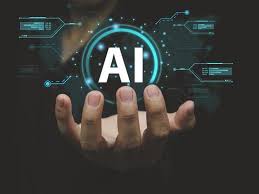Artificial Intelligence (AI) has revolutionized industries, from healthcare to finance, by automating processes and making intelligent decisions. At the core of AI lies algorithms—mathematical models designed to process data, identify patterns, and make predictions. This blog explores different types of AI algorithms, how they work, and their real-world applications.
What Are AI Algorithms?
An AI algorithm is a set of instructions that enables a machine to learn from data and make decisions. Unlike traditional programming, where explicit rules define outcomes, AI algorithms use data to generate insights and refine their decision-making abilities over time.
Types of AI Algorithms
1. Supervised Learning Algorithms
These algorithms learn from labeled data, where the input is mapped to an expected output. The model is trained on historical data and then tested on new data.
- Examples: Linear Regression, Logistic Regression, Decision Trees, Support Vector Machines (SVM), and Neural Networks.
- Use Cases: Email spam detection, fraud detection, and medical diagnosis.
2. Unsupervised Learning Algorithms
These algorithms work with unlabeled data, finding hidden structures or patterns without explicit guidance.
- Examples: K-Means Clustering, Hierarchical Clustering, Principal Component Analysis (PCA), Autoencoders.
- Use Cases: Customer segmentation, anomaly detection, and recommendation systems.
3. Reinforcement Learning Algorithms
Reinforcement Learning (RL) is based on reward-based learning, where an agent learns by interacting with an environment and receiving feedback.
- Examples: Q-Learning, Deep Q Networks (DQN), Policy Gradient Methods.
- Use Cases: Game playing (AlphaGo, OpenAI Gym), robotics, and autonomous vehicles.
Popular AI Algorithms and Their Functioning
1. Decision Trees
A decision tree is a flowchart-like model used for classification and regression. It splits data based on feature conditions and makes decisions by following a path.
- Use Case: Credit risk assessment in banking.
2. Neural Networks
Inspired by the human brain, neural networks consist of interconnected layers of neurons that process data. Deep learning models like CNNs and RNNs fall under this category.
- Use Case: Image recognition, speech processing, and natural language processing (NLP).
3. Genetic Algorithms
Inspired by natural selection, genetic algorithms evolve solutions by selecting the best candidates, mutating them, and combining them to find optimal results.
- Use Case: Optimization problems in logistics and scheduling.
Real-World Applications of AI Algorithms
1. Healthcare
AI algorithms assist in diagnosing diseases, predicting patient outcomes, and personalizing treatments.
- Example: IBM Watson uses AI to analyze medical data and recommend treatments.
2. Finance
AI-driven algorithms detect fraudulent transactions, optimize trading strategies, and automate customer service.
- Example: Algorithmic trading models predict stock price movements.
3. E-commerce
Recommendation engines powered by AI suggest products based on user preferences.
- Example: Amazon and Netflix use collaborative filtering algorithms.
4. Autonomous Vehicles
AI algorithms power self-driving cars by analyzing sensor data and making real-time decisions.
- Example: Tesla’s Autopilot uses deep learning models for navigation.
Challenges in AI Algorithms
Despite their advancements, AI algorithms face several challenges:
- Data Bias: Poor-quality data can lead to biased outcomes.
- Computational Costs: Training deep learning models requires significant processing power.
- Interpretability: Some AI models function as “black boxes,” making it hard to understand their decisions.
Conclusion
AI algorithms are the backbone of artificial intelligence, enabling machines to process information and make decisions. From supervised learning to reinforcement learning, these algorithms are shaping the future across various industries. As AI technology evolves, improvements in algorithm efficiency and interpretability will unlock even greater potential.
Stay tuned for more insights into AI and machine learning!

ASDFGHJKL